#obsessed with the Korean edition (dead center)
Text
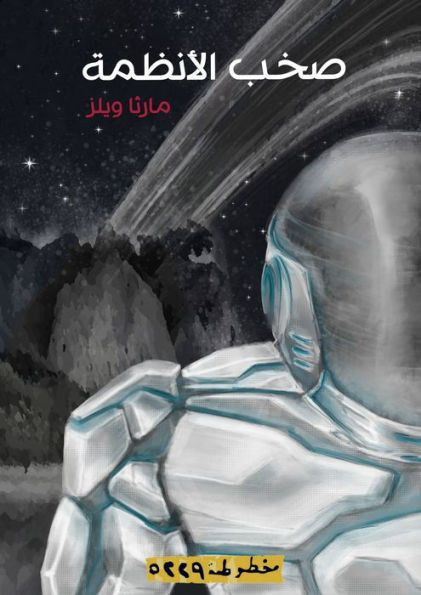



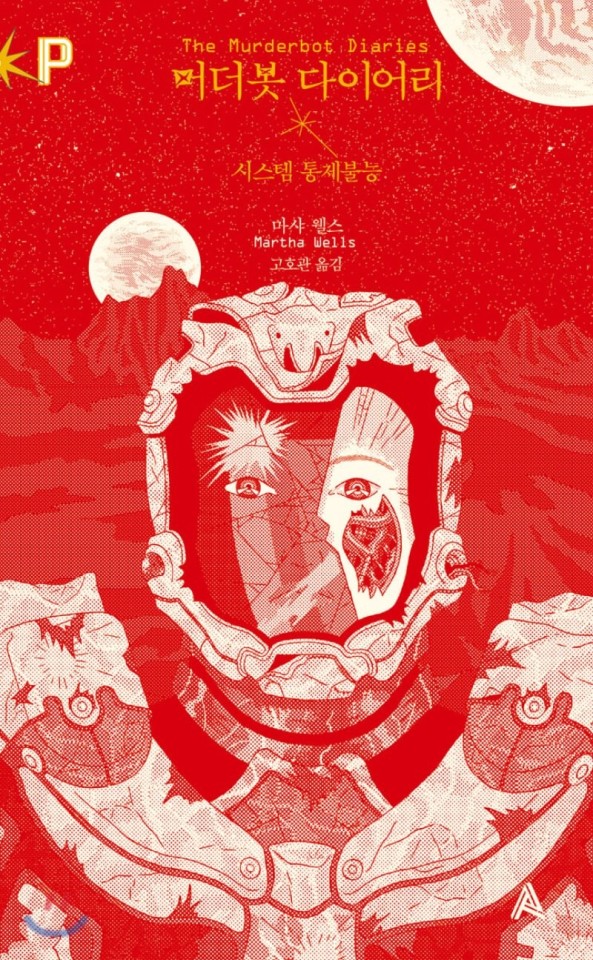
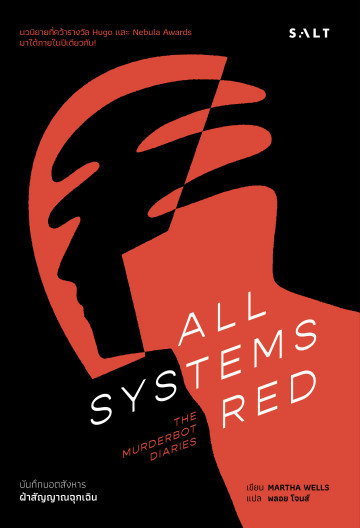

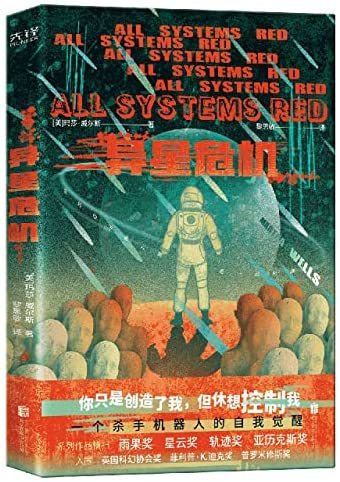

different language editions of All Systems Red
#the Murderbot diaries#all systems red#tmbd#there's even more editions!! these are just the ones that I thought had the coolest covers#obsessed with the Korean edition (dead center)
621 notes
·
View notes
Text
Double Features 2: Splatter, Splicer, Slander, Slasher
Considering the fact that we’re locked down and most folks aren’t going out much, why not settle in on a weekend with double feature. As part of a series of articles, I’ve decided to suggest some titles that would make for an interesting pair. It’s a time commitment like binging a few episodes of a TV show, and hopefully these double features are linked in interesting enough ways that it has a similar sense of cohesion. They also can be watched on separate occasions, but the lesser the distance between them, the more the similarities show. Do it however you want, really. I’m merely a guy on the internet, and that qualifies me for absolutely nothing! Enjoy at your own risk.
This template is back! I wanted to suggest a few more double features, but this time keep them in a specific genre: horror. I love horror movies, and I realized that I hadn’t really given them their due on this here blog, so I wanted to remedy that by showing a lot of love across a lot of different movies. I’ve put together some international movies, some classics, some that are silly, some that are serious, and even a bonus suggestion hidden in one of these blurbs. So without any more ramble in the preamble, here are four new suggested double features.
Note: The pairs are listed in the order I think best serves them being seen.

Hausu & Evil Dead II:
Hausu aka House (not to be confused with 1985 American horror film of the same name) has sort of transcended cult movie status to become a staple of off-center horror-comedy. Directed by recently deceased Nobuhiko Obayashi, the film shows his roots in advertisements with every shot designed for maximum effect, a (still) cutting edge approach in the edit, and a joyous, playful approach to special effects. It’s a gauzy and dreamy romp about a group of schoolgirls who head to the countryside on vacation. While staying at one of their aunts’ house, the supernatural hauntings begin, and heads start to roll (as well as bite people on the butt). It’s the type of movie where the main cast of characters are named Gorgeous, Kung Fu, Melody, Prof, Mac, Sweet, and Fantasy and they each have corresponding character traits. I was lucky enough to catch this at a rep screening at the Museum of Fine Arts a few years ago (further proof that this has gone beyond the cult curio status), and this is absolutely a movie that benefits from having a crowd cheer and laugh along - but it’s fairly easy to find and still has lots of pleasures to be enjoyed on solo watch. I’m pretty much willing to guarantee that if you enjoy it on first watch, you’ll want to share it with others. Now, where does one start when talking about Evil Dead II? Sam Raimi is rightfully as well known for his start in the hair-brained splatter genre fare as he is for his genre-defining Spider-man films. The influence of the Evil Dead movies is nearly unquantifiable, apparent in the work of directors like Edgar Wright, Peter Jackson, Quentin Tarantino, and the Korean New Wave filmmakers like Bong Joon-ho and Park Chan-wook. There’s a reason that the second film of his Evil Dead odyssey is the one that people hold in highest esteem, though. There is an overwhelming gleeful creativity, anything goes, Looney Tunes approach to it that makes the blood geysers, laughing moose heads, and chainsaw hands extend beyond gore and shock into pleasure. It’s been noted over and over by critics and Raimi himself that the Three Stooges are probably the biggest influence on the film, and by golly, it shows. Evil Dead II and Hausu are pure in a way that few other movies can be. Both of these movies are an absolute delight of knowing camp, innovative special effects, and a general attitude of excitement from the filmmakers permeating through every frame. They’re a total blast and, in my mind, stand as the standard-bearers for horror-comedy and haunted house movies.
Total Runtime: 88 minutes + 84 minutes = 172 minutes aka 2 hours and 52 minutes
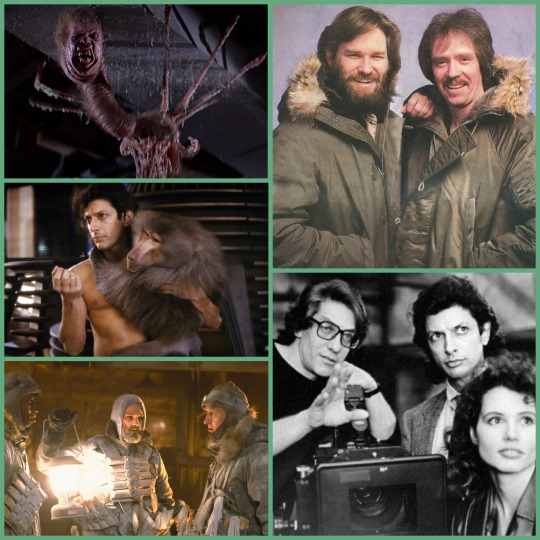
The Thing (1982) & The Fly (1986):
Feel free to roll your eyes as I explain the plots of two very famous movies. The Thing is John Carpenter’s body horror reimagining of Howard Hawks’ The Thing from Another World and the story that was adapted from, “Who Goes There?” by John W. Campbell Jr. The film is centered around a group of men in an arctic outpost who welcome in a cosmic force of shape-shifting annihilation. What ensues is a terrifically scary, nihilistic, paranoid attempt to find who isn’t who they say they are before everyone is replaced with the alien’s version of them. The film is a masterpiece of tone in no small part due to Dean Cundey’s photography and Ennio Morricone’s uncharacteristically restrained score. The real showstopper here, though, is the creature effects designed by Rob Bottin with an assist from Stan Winston – two titans of their industry. There may not be a more mind-blowing practical effects sequence in all of movies than Norris’ defibrillation – which I won’t dare spoil for anyone who hasn’t seen it. The story is so much about human nature and behaviors, that it’s good news that the cast is all top-notch – anchored by Kurt Russell, Keith David, and Wilford Brimley. While The Thing is shocking and certainly not for anyone opposed to viscera, David Cronenberg’s The Fly is the best example of a movie not to watch while eating. Quite frankly, it’s got some of the most disgusting things I’ve ever seen on film. Chris Walas and Stephen Dupuis’ makeup effects are shocking, but the terror is amplified because this builds such a strong foundation of romance in its opening stretch between Jeff Goldblum and Geena Davis in what might be their career-best work. The story is simple: a scientist creates a teleportation device that he tries out himself, but unknowingly does so with a fly in the chamber with him. When he reatomizes on the other end, his DNA has been integrated with the fly. Slowly his body begins to deteriorate, and he transforms into a human-fly hybrid. While this is first and foremost a science-fiction horror film, it’s truly one of the most potent love stories at its center. The tragedy is that the love, like the flesh, is mutated and disintegrated by the hubris of Goldblum’s Seth Brundle. Here are two remakes that – clutch your pearls – outdo the original. They both serve as great examples of what a great artist can bring by reinterpreting the source material to tell their version of that story. The critical respect for Carpenter and Cronenberg is undeniable now, but both of these movies make the case that there are real artists working with allegory and stunning craft in less respected genre fare. It doesn’t take a lot of effort to transpose the thematic weight of the then-new AIDS crisis onto both films, but they both have a hefty anti-authority streak running through them in a time where American Exceptionalism was at an all-time high. If you want to get a real roll going, fire up the ’78 Invasion of the Body Snatchers first to get a triple dose of auteur remakes that reflect the social anxieties of the time and chart from generalized anxiety to individualistic dread to romantic fatalism.
Total Runtime: 109 minutes + 96 minutes = 205 minutes aka 3 hours and 25 minutes
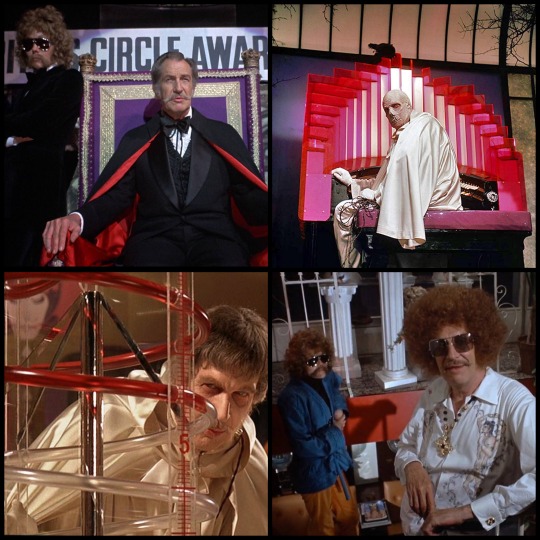
Theatre of Blood & The Abominable Dr. Phibes
That old Klingon proverb that Khan tells Kirk about revenge being a dish best served cold is challenged by these two Vincent Price tales of the macabre. They posit that revenge is best served in extremely convoluted and thematically appropriate predecessors to the Saw franchise. Where Saw trades in shock and extremity, though, these classic horror tales offer an air of panache and self-satisfied literacy. In Theatre of Blood, Price plays a disgraced and thought-dead stage actor who gets revenge on the critics who gave him negative reviews with Shakespeare-themed murder. There’s good fun in seeing how inventive the vengeful killings are (and in some cases how far the writers bend over backwards to explain and make sense of them). It’s a little rumpled and ragged in moments, but Price is, of course, a tremendous pleasure to see in action as he chews through the Shakespeare monologues. Imagine the Queen’s corgis with a chainsaw and you’re on track. Phibes came first and, frankly, is the better of the two. The story is about a musician who seeks to kill the doctors who he believes were responsible for his wife’s death during a botched surgery. The elaborate angle he takes here is to inflict the ten plagues from the Old Testament. I hesitate to use a word that will probably make me come across as an over-eager schmuck, but it really feels best described as phantasmagorical. It’s got this bright, art deco, pop art sensibility to it that’s intoxicating. It also has a terrifically dark sense of drollery - it knows that you can see the strings on the bat as it flies toward the camera. Aesthetically, it feels adjacent to the ’66 Batman show. The music is great and the indelible image of his tinker toy robot band, The Clockwork Wizards, is a personal obsession of mine. Both Theatre of Blood and The Abominable Dr. Phibes feature great supporting turns from Diana Rigg and Joseph Cotton, respectively. Settle in for a devilishly good time and enjoy one of cinema’s greatest vicarious pleasures: getting back at those of criticized or hurt you.
Total Runtime: 104 minutes + 94 minutes = 198 minutes aka 3 hours and 18 minutes
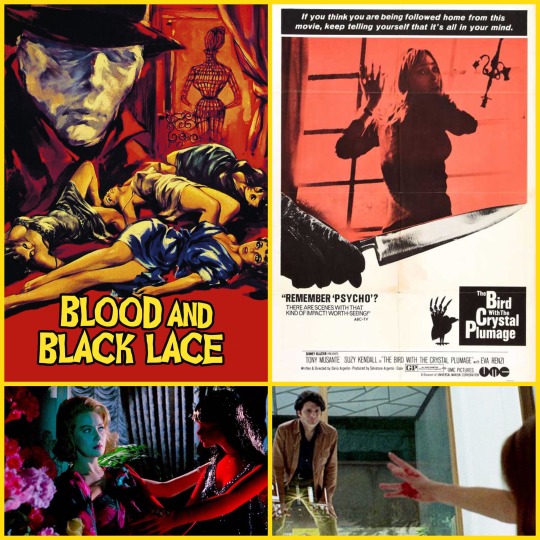
Blood and Black Lace & The Bird with the Crystal Plumage
The final pairing comes from beyond American borders and, to some, beyond the borders of good taste. Mario Bava and Dario Argento are likely the two biggest names in Italian horror, and that’s for very good reason. Bava, who started as a cinematographer, has made loads of movies (even the film which gave Ozzy Osbourne and crew the name their band name) that have tremendous visuals and terrific sense of mood. Argento, probably most famous now for Suspiria, emerged onto the Italian film scene a handful of years later and picked up that baton from Bava to crystallize the dreamy logic puzzles cloaked in hyper-saturated colors. These two films are regarded as quintessential in the giallo genre – named for the yellow covers of the pulp crime fictions that inspired them. As someone who loves the flair that can be applied to make a slasher film stand out amongst their formulaic brethren, I found that the giallo made for a smooth transition into international horror. Blood and Black Lace is a murder mystery that’s as tawdry and titillating as its title suggests. Set in an insular world of a fashion house in Rome, models are being murdered. The plot feels like a necessity in order to create a delivery system for the stunning set pieces that revolve around a secret diary. Bava puts sex right next to violence and cranks up the saturation to create something thrillingly lurid. Six years later, Argento made his first film which has often been credited for popularizing the giallo genre and already is playing around with some of his pet themes like voyeurism and reinterpretation. Built around an early set piece (that stacks up as one of the best in thrillers) in which a man is trapped but witnesses a murder, the film sees said man trying to find the piece of evidence that will make the traumatic killing make sense. Like Bava, it blends sex and violence with tons of flair, including a score by the aforementioned Ennio Morricone. The film is absolutely on a continuum between Hitchcock and De Palma. If you’re looking for a pair of exciting horror/thrillers, or even an entry point to foreign genre cinema, this is an accessible and enjoyable place to start.
88 minutes + 96 minutes = 184 minutes aka 3 hours and 4 minutes
Well, there you have it. Eight movies, and hours of entertainment curated by some guy with no real qualifications. If you’re interested in some more suggestions (in horror and other genres), stay tuned for the next entry in this Double Features series. And if you’re looking for a way to watch these movies, I highly recommend the app/website JustWatch where you can search a title and see where it’s available for streaming or rental. Happy viewing.
Thanks for reading.
#evil dead#evil dead 2#hausu#hausu 1977#the thing#the fly#theatre of blood#dr phibes#blood and black lace#bird with the crystal plumage#double feature
15 notes
·
View notes
Photo
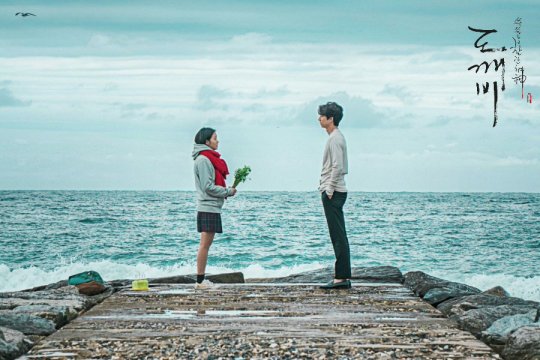
Guardian: The Great And Lonely God
or like any reasonable English-speaking fan would call it*
Goblin
*DramaBeans referred to it as The Lonely Shining Goblin, as usual tracking toward fandom needs with utter disregard for what official outlets say
an aesthete review
SPOILERS ABOUND BUT THERE IS NO CUT you know you’d scroll by without reading if you didn’t care anyway so it doesn’t matter
So. It feels like even longer ago that Goblin came out because there was so much lead-up hype, and also, a lot has happened in my life since January 2017. This is the first fresh Korean drama I’ve watched in possibly that long or longer. I picked it up in the last month or so because I’m studying Korean and wanted to reconnect with it in a more natural context. And I hadn’t forgotten that though there were issues in the story premise, and mixed reactions to it as it aired, I had wanted to see Gong Yoo in a drama like this really badly.

Looking at Gong Yoo’s filmography, I can see why I feel like he’s been in hardly any dramas. After Coffee Prince, which is one of the dramas that really sold me on Korean TV as particularly interesting) the only other project he’s done was Big. This was a drama that was also highly anticipated and panned by most of the reviewers I knew. I had loved him in Biscuit Teacher Star Candy the way one loves a particularly gifted actor in an early effort--he’s charismatic and pretty (and 26 though playing a teenager).
I’m sure preference comes into play with the weight of movies in his career, but also he’s a little less of a mutable person than some major players in drama. Try to imagine swapping him for Lee Dong Wook in roles, for instance. Lee Dong Wook can be playful or dead serious or just incredibly dumb, because in some ways he’s a clean slate. I’m not sure why this is true, but it enables him to move from secondary leads to lead and back again with a variety of characters.
Gong Yoo is in a class with Kim Sun-Ah or Hyun Bin: he can embody characters in ways that feel immediate and real, but there is a certain core to them that comes from his own person. It’s a strength, but one that requires a character to fit in a certain way.
The Goblin, fka Kim Shin, needs an acute actor who can carry off both the kind of inner intense conviction that would fuel a hero to the kind of death and rebirth the character suffers, as well as a softness and hopefulness that makes a love story work.
Even considering my bias, don’t think it’s too much to say Goblin works because of Gong Yoo's abilities in that regard.

While fantastic elements are fairly common in Korean dramas, getting a full-fledged fantasy that treats its fantastic elements with the sort of care a procedural would matters of law or a hospital drama would matters of medicine is not as wide-spread.
Goblin both creates a consistent world of fantasy and does not overdo answering questions. The important points are clear, the ambiguities are not plot-breaking. While in the case of what happens once the sword is pulled out, one of the rules does seem to be broken by the drama, for the most part, all promises are kept. I have my issues with Kim Shin continuing on in an immortal form when I think a normal human life span from here out could do (barring the fact that they force him to wait for another reincarnation) but this is me as a fantasy specialist critiquing a choice the writer made, not a point of the mythology not working.
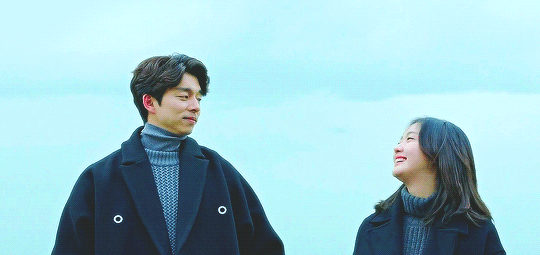
The main sticking point of the drama for most critics is the age gap.
In a way, I’m not as bothered by age gaps when it comes to immortal beings--there’s not a huge difference between being 19 and 30 when your partner is 396, right?
I’m sure I’m not the first to say this, but the writer could have worked around this, and almost seems interested in doing so with the time-skip--only to have their second lifetime meeting also happen when she’s in high school.
I’m at a college right now and I’m 33 with a lot of classmates who are between 18 and 21. They are having adult relationships, but in real life I do give a look askance when the dude seems much older. And younger than 19 is really young.
If 29 was a fine time for them to be together in the end, with a much more intimate relationship, how long does Kim Shin wait the second time around?
Anyway, let the man die and come back as the same age, is what I’m trying to tell you.
Overall, the writing did a good job of allowing our heroine to be her age, and the romance to develop according to her pace. If there hadn’t been a second advent of her as a teenager in his life, with his years still running on ad infinitum, it would have seemed fine.

The fact that Ji Eun Tak, Goblin’s Bride, is a sort of classic Cinderella figure could have been an issue, too. However, I felt like she was given a lot of dimension so I rarely remembered that she was embodying a trope. Her clear memories and relationship with her mother help with that--she may live with uncaring relatives, but she has known herself to be loved and that centers her.
I also liked that her will was so important. In the back and forth between her and Kim Shin before it’s truly established that she is his destined bride, she gets to make choices about her relationship with him and while he withholds information a good deal of that is to allow her more choice.
This is a deployment of fate that feels full-bodied--the fate isn’t just something determined from the outside, even though we hear the voice of the gods in the actual narrative. Because of who these people are, they choose what has been predicted for them.
And the story is largely from her point of view, even as Kim Shin’s perspective and history shape so much of the plot. Her obsession with candles takes over the house Goblin and Reaper share, so at the end, Reaper has candles in his room. Her relationships are what center the story so much that the reminder that Deok Hwa doesn’t know her yet comes as a surprise before AND after the memory wipe. Everyone else connects in spokes around her--even Kim Shin and the Grim Reaper have to find their friendship footing around her status between them, where before they were just odd roommates.
What Ji Eun Tak wants is very important to this story, even when it is initially denied to her.
She is the only one who says no to the tea of forgetting, and gets no word of argument or explanation from her Reaper.

Altogether, I really enjoyed this show. Even the ending (which I had gotten vibes about that warned me of disappointment) which I didn’t love made sense in the logic of the rest of the story, including its failures.
It was a beautifully shot series, though with erratic editing in some of the chapters, and the intensity of the storyline carried off the high drama that might otherwise have turned maudlin.
If I were to watch it again, I’d be tempted to skip the last part of the last episode, leaving it in my mind that Kim Shin finally grew old, that by suffering his absence without memory was enough heroic suffering for Ji Eun Tak, and that when Reaper has done his duty and escorted Sunny into the afterlife they all come back together as childhood friends in a Reply 2079 reboot story.
...At the same time, the time inversions of the opening matching up with the first and last episode are pretty sweet, and I wouldn’t have missed that little bit of clever resonance just for a less messy headcanon version.

#Goblin#Guardian#kdrama#The Great and Lonely God#korean drama#review#spoilers#Goblin spoilers#Guardian spoilers
12 notes
·
View notes
Photo
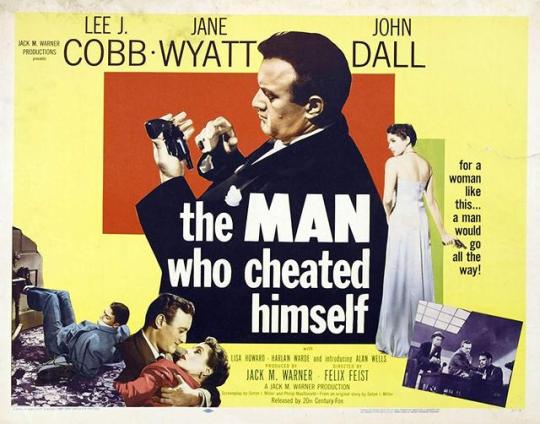

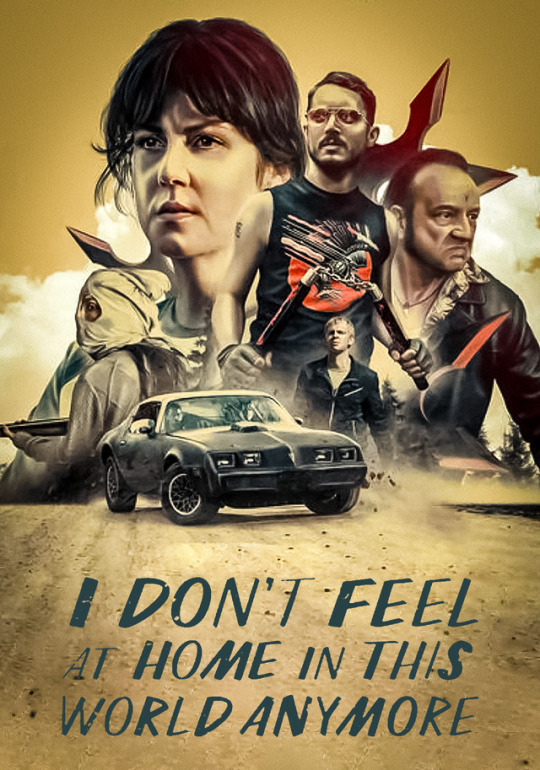

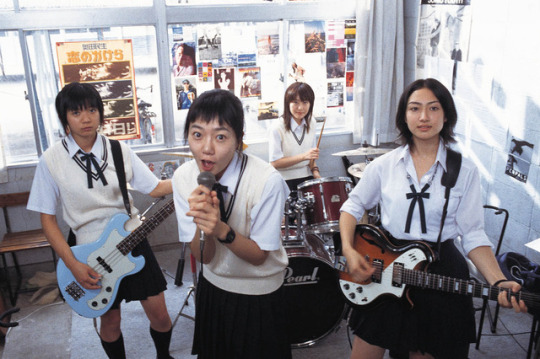
My Year in Movies: Favorite Non-2018 Feature Films (Part 1)
I watched a LOT of movies this year. At last count, I had logged 229 features and 126 shorts; and that doesn’t count rewatches--only movies that were new to me.
I set a few challenges for myself as well this year. The first one was to watch at least one non-English language/US release per week--this exposed me to so much world cinema and some really amazing filmmakers. Anyone who avoids foreign films because “I don’t like subtitles” is really missing out, and I found myself craving these narratives from voices I don’t ordinarily get exposed to in my everyday life.
Other personal challenges: Watching as many horror movies as possible in October (with horror defined pretty loosely so I could include entries from silent era and onward, as well as some comedy cult classics that have horror/thriller elements); participating in Noirvember (in addition to attending Noir City in Chicago); crossing off some major blindspots from my list (such as Bicycle Thieves, The Producers, Lethal Weapon, A Few Good Men, Grease, Home Alone 2, Brazil, and Indiana Jones & the Temple of Doom); and trying to watch movies and short films from every decade that motion pictures have existed.
In 2019, I hope to do similar personal challenges with a focus on movies made by women, LGBTQ+, and people of color, in addition to filling in the gaps of my classical/canonical movie knowledge.
OK, so that’s enough preamble. Let’s get to the list! For this list, I’m excluding movies that were released in 2018--that’s coming but this is for movies released before that.
50. Linda Linda Linda (2005, directed by Nobuhiro Yamashita, country of origin: Japan)
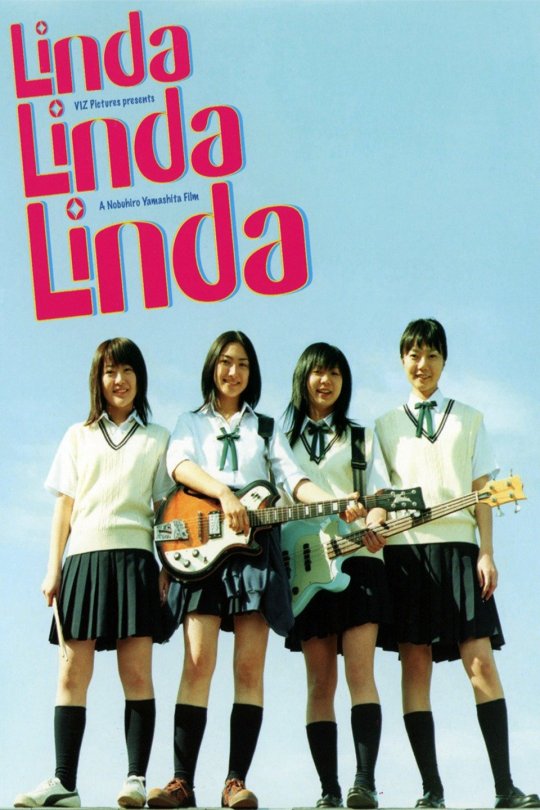
High school girls recruit the Korean exchange student (Doona Bae, of Cloud Atlas and Sympathy for Mr. Vengeance) to join their rock band a few days before the school talent show. This is just a feel good film, recommended if you enjoyed the likes of Sing Street, We Are The Best!, and The Runaways. Unfortunately, it’s out of print in physical form; but last I checked someone had uploaded it to YouTube so you might want to get on that before it’s removed. You can watch the trailer here.
49. The Blue Dahlia (1946, directed by George Marshall, country of origin: US)
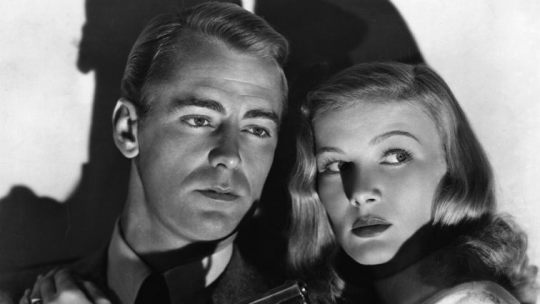
This film noir stars Veronica Lake and Alan Ladd, and like any good noir, it deals with dark subjects including murder, blackmail, political corruption, and PTSD. It’s been on my watchlist for a long time, and thanks to Noir City Chicago, I got to see it on the big screen at the Music Box Theatre. For small screen viewing, you can catch up with it via rental on Vudu, Amazon, iTunes... the usual suspects.
48. Siren of the Tropics (1927, directed by Mario Nalpas and Henri Etievant, country of origin: France)

My dearly departed Filmstruck had a spotlight on the films of Josephine Baker, and this was among them. I fell in love instantly with the lively, beautiful Baker, here playing a woman named Papitou who deals with some super scummy dudes but manages to be herself in the face of all that nonsense. Silent films can sometimes be tougher to engage with for modern audiences, but this one flies by and contains some unexpectedly racy sequences for the time. Its racial politics don’t meet today’s cultural standards, but considering Baker’s parents were former slaves and their daughter went on to become the first woman of color to star in a major motion picture, this is still a landmark film worthy of our consideration. She broke down many barriers and contributed a great deal to both the entertainment world and the Civil Rights movement, and this serves as a nice entry point into her career. It’s available on DVD through Kino Lorber, and hopefully one day soon it’ll pop up on another streaming service that carries on the Filmstruck legacy.
47. I Don’t Feel At Home in This World Anymore (2017, directed by Macon Blair, country of origin: US)
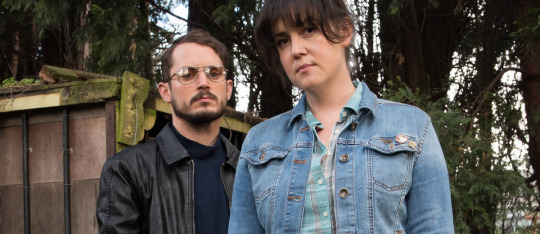
Here’s a film that goes to some unexpected places. I had no idea what to expect from Macon Blair, who frequently appears in the movies of Jeremy Saulnier; but in his debut feature for Netflix, he pulled out all the stops. Hilarious, violent, and intense, with memorable performances from stars Melanie Lynskey and Elijah Wood, this is a movie about getting in over your head and just going for it anyway. I don’t want to tell you about the plot because it’s best discovered through watching--just go to your nearest device and add it to your Netflix queue.
46. Song of the Sea (2014, directed by Tomm Moore, country of origin: Ireland)
Absolutely gorgeous animation from the team that previously brought us The Secret of Kells, and a touching story that combines family and mythology. I adored this one. Watch it on Netflix or rent on the usual streaming sources--for a preview, click here.
45. Yankee Doodle Dandy (1942, directed by Michael Curtiz, country of origin: US)

I always watch Independence Day on the Fourth of July; but in 2018, I decided to mix it up and cross this patriotic musical off the watchlist. I’d seen James Cagney’s gangster movies like White Heat and The Public Enemy, but seeing him sing and dance was a whole new joyous discovery. This movie is entertaining, funny, touching, and full of iconic sequences that other films would go on to borrow from. I absolutely loved it. Pretty sure I saw this on Filmstruck originally, but since that’s no longer possible you should be able to find it at your local public library or you can rent it for a couple bucks on Amazon, YouTube, iTunes, and the like.
44. The Man Who Cheated Himself (1950, directed by Felix Feist, country of origin: US)
This tightly wound noir thriller pits brother against brother against the backdrop of 1950s San Francisco. Lee Cobb plays an aging bachelor and an accomplished police detective who falls for the wrong dame. His younger brother, played by John Dall (Gun Crazy, Rope), has just joined the police force and idolizes his older brother. Trouble strikes when the dame murders her no good husband and needs help from Cobb to cover it up. Naturally, Dall gets assigned to the case and as he begins to piece together the clues, he doesn’t like where they’re leading him. The climactic sequence is one of my favorite endings to a noir film, and I’ve seen a lot of them. Watch it for free if you have Amazon Prime; otherwise, there are a few versions uploaded to YouTube of varying quality or you could wait for it to pop up on TCM.
43. Los Angeles Plays Itself (2003, directed by Thom Andersen, country of origin: US)

This documentary edits together clips from movies of every era that were filmed or set in Los Angeles, and explains through voiceover narration the significance of each location and the history of the motion pictures in LA. That’s it--very simple concept but also fascinating. I split this up over a couple nights because it’s pretty long, but if you’re a film fan or a Los Angeles native, this is well worth your time. The voiceover is kind of hilariously flat in its delivery--kind of a Steven Wright sound actually--but that sort of adds to the charm for me. Get a taste by watching the trailer, and then you can rent it on YouTube for $1.99.
42. A Simple Plan (1998, directed by Sam Raimi, country of origin: US)
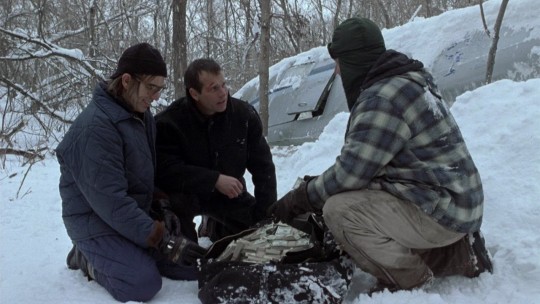
It’s been almost two years since we lost Bill Paxton; I don’t know about you but I don’t think any other actor can really fill those shoes. This year I caught up with three films that showcased his talent: A Simple Plan, One False Move, and Frailty. He plays very different characters in each one but in many ways they all start off with a similar premise: Ordinary guy dreams of becoming more. What that “more” is for each character is what sets each film and performance apart, but Paxton provided a great canvas to paint these unique characters onto. He inhabited the ordinary man better than just about anyone.
In this film, which I watched during Noirvember, Paxton plays Hank, a college-educated guy working a blue collar job in a small town, trying to make a better life for himself and his family. He’d like to get away from those small town roots, but his socially awkward brother Jacob (Billy Bob Thornton) relies on him. Unfortunately, Jacob is often accompanied by the hard-drinking loose canon Lou (Brent Briscoe). When the unlikely trio discover a crashed plane in the woods containing a suitcase full of cash, they each have ideas for how to handle the situation. Of course things escalate from there, and the way the movie explores human nature and family ties set this story apart. Available for online rental on the usual platforms.
41. The Iron Giant (1999, directed by Brad Bird, country of origin: US)
Given my obsession with Vin Diesel in the early 2000s, it’s pretty shocking I never saw this movie til now--sure, he and his glorious muscles don’t appear on screen, but he does provide the voice of the title character after all. When the Iron Giant made a controversial cameo in this year’s film adaptation of Ready Player One, I decided it was time I saw the source material for myself.
This gorgeously animated fable unfolds during the Cold War era, and features an ET-inspired story arc of a young boy befriending an unlikely being that the government is looking for. If you’ve never seen it, this is definitely a must-watch. Currently available on Netflix, but rentable on other platforms too.
40. The Unsuspected (1947, directed by Michael Curtiz, country of origin: US)

I adore Claude Rains, star of this film and supporting actor in Curtiz’s more famous work, Casablanca. Here, he plays the host and narrator of a popular radio show that revolves around tales of murder--basically the Law and Order: SVU of its day. We learn early on that he sometimes draws inspiration for his broadcasts from real life criminals. When people in his own life start dropping dead, the plot thickens and he finds himself at the center of the action. A very suspenseful and well-plotted film noir, which is available from the Warner Archive collection on DVD. I got to see it at Noir City Chicago, and loved every second of it.
That’s all for this entry--stay tuned for part two of this list, posting soon!
#film noir#foreign films#favorite films#movie lists#Movie Reviews#netflix#amazon prime#streaming movies#sam raimi#brad bird#the iron giant#bill paxton#james Cagney#michael curtiz#elijah wood#macon blair#melanie lynskey#doona bae#song of the sea#animation#silent films#josephine baker#filmstruck
9 notes
·
View notes
Text
54 Books, 1 Year
2018 was my first full year back at work after my mat leave, and thanks to all the time I spend on the subway, my yearly reading total is back up to over 50 books!
2018 was a dark year, and I made a conscious effort to read more books from authors on the margins of society. The more those of us with privilege take the time to listen to and learn from these voices, the better we’ll be as friends, colleagues and citizens.
You’ll also notice a lot of books about witchcraft and witches in this year’s list. What can I say? Dark times call for resorting to ANYTHING that can help dig us out of our current reality, including putting a hex on Donald Trump.
Trigger Warning: Some of the books reviewed below are about mental illness, suicide, domestic violence, sexual assault, and violence against people of colour, Indigenous people and people in the LGBTQ community.
Here are this year’s mini reviews:
1. The Lottery and Other Stories / Shirley Jackson
Jackson’s short stories were published in the late forties and fifties, but their slow-burning creep factor holds up today. The stories involve normal people doing normal things until something small gives, and we realize something is really wrong here. As you read through the collection, take note of the mysterious man in blue. He appears in about half of the stories, always in the margins of the action. Who is he? I read him as a bit of a trickster figure, bringing chaos and mayhem with him wherever he goes. Other people have read him as the devil himself. Let me know what you think!
2. The Ship / Antonia Honeywell
I was excited to read this YA novel about a giant cruise ship-turned-ark, designed and captained by the protagonist Lalla’s father in a dystopic near future. The premise of the book is great and brings up lots of juicy questions – where is the ship going? How long can the passengers survive together in a confined space? How did Lalla’s father choose who got to board the ship? But the author’s execution was a disappointment and focused far too much on Lalla’s inner turmoil and immaturity.
3. The Hot One: A Memoir of Friendship, Sex and Murder / Carolyn Murnick
My book club read this true crime memoir detailing the intense, adolescent friendship between Carolyn, the author, and Ashley, who was murdered in her home in her early 20s a few years after the girls’ friendship fizzled. Murnick is understandably destroyed by the murder and obsessed with the killer’s trial. The narrative loops back and forth between the trial and the girls’ paths, which diverged sharply after Ashley moved away in high school. Murnick (the self-proclaimed nerdy one) muses on the intricacies of female friendship, growing up under the microscope of the male gaze, and the last weekend she ever spent with Ashley (the hot one). This is an emotional, detailed account of a woman trying her best to bear witness to her friend’s horrific death and to honour who she was in life.
4. �� The Break / Katherena Vermette
Somebody is brutally attacked on a cold winter night in Winnipeg, and Stella, a young Métis woman and tired new mother is the only witness – and even she isn’t sure what she saw. The police investigation into the attack puts a series of events in motion that make long-buried emotions bubble to the surface and ripple outwards to touch a number of people in the community, including an Indigenous teenager recently released from a youth detention center, one of the investigating officers (a Métis man walking a fine line between two worlds), and an artist. This is a tough read, especially in the era of #MMIW and #MeToo, but all the more important because of it.
5. So You Want to Talk About Race / Ijeoma Oluo
Probably the most important book I read this year, I will never stop recommending this read to anyone and everyone. This is your Allyship 101 syllabus right here, folks. Do you really want to do better and be better as an ally? Then you need to read every chapter closely and start implementing the lessons learned right away. This book will teach you about tone policing, microaggressions and privilege, and how all of those things are harmful to people of colour and other marginalized communities.
6. The Accusation / Bandi
This is a collection of short stories by a North Korean man (written under a pseudonym for his protection as he still lives there). The stories were actually smuggled out of the country for publication by a family friend. The characters in these stories are regular people living regular lives (as much as that is possible in North Korea). What really comes across is the fine line between laughter and tears while living under the scrutiny of a dangerous regime. There are several scenes where people laugh uncontrollably because they can’t cry, and where people start to cry because they can’t laugh. This book offers a rare perspective into a hidden world.
7. Being Jazz: My Life as a (Transgender) Teen / Jazz Jennings
Some of you will be familiar with Jazz via the TLC show about her and her family, “I Am Jazz”. I’d never seen it but was inspired to read the book to gain a better understanding about what coming out as trans as a child is like. Jazz came out to her family at 5 years old (!) and her parents and siblings have had her back from the beginning. If you are still having a tough time understanding that trans women are women, full stop, this book will help get you there.
8. A Field Guide to Getting Lost / Rebecca Solnit
When it comes to the books that gave me “all the feels”, this one tops the 2018 list. Solnit is everything - historian, writer, philosopher, culture lover, explorer. Her mind is always making connections and as you follow her through her labyrinthine thoughts you start to feel connected too. Her words on loss, nostalgia and missing a person/place/time actually made me cry, they were so true. For me, an agnostic leaning towards atheism, she illuminated the magic in the everyday that made me feel more spiritually rooted to life than I have in a long time.
9. I Found You / Lisa Jewell
Lots of weird and bad things seem to happen in British seaside towns, don’t they? This is another psychological thriller, à la “The Girl on the Train” and “Gone Girl”. One woman finds a man sitting on the beach one morning. He has no idea who he is or how he got there. Miles away, another woman wakes up one morning to find her husband has vanished. Is the mystery man on the beach the missing husband? Dive into this page-turner and find out!
10. The Midnight Sun / Cecilia Ekbäck
This novel is the sequel to a historical Swedish noir book I read a few years ago. Though it’s not so much a sequel, as it is a novel taking place in the same setting – Blackasen Mountain in Lapland. This story actually takes place about a hundred years after the first novel does, so it can be read on its own. Ekbäck’s stories dive into the effect of place on people – whether it’s the isolation of a harsh and long winter or the mental havoc caused by the midnight sun on sleep patterns, the people on Blackasen Mountain are always strained and ready to explode. (Oh, and there’s also a bit of the supernatural happening on this mountain too – but just a bit!)
11. After the Bloom / Leslie Shimotakahara
Strained mother-daughter relationships. The PTSD caused by immigration and then being detained in camps in your new home. Fraught romances. Shimotakahara’s novel tackles all of this and more. Taking place in two times – 1980s Toronto and a WWII Japanese internment camp in the California desert – this story of loss, hardship, betrayal and family is both tragic and hopeful.
12. Company Town / Madeline Ashby
In this Canadian dystopian tale, thousands of people live in little cities built on the oil rigs off the coast of Newfoundland. Hwa works as a bodyguard for the family that owns the rigs and is simultaneously trying to protect the family’s youngest child from threats, find out who is killing her sex-worker friends, mourn her brother (who died in a rig explosion), and work through her own self-esteem issues. Phew! If it sounds like too much, it is. I really did like this book, but I think it needed tighter editing and focus.
13. The Power / Naomi Alderman
In the near-future, women and girls all over the world develop the ability to send electrical shocks out of their hands. With this newfound power, society’s gender power imbalance starts to flip. The U.S. military scrambles to try and work this to their advantage. A new religious movement starts to grow. And Tunde, a Nigerian photographer (and a dude!) travels the world, trying to document it all. This is an exciting novel that seriously asks, “what if?” in which many of the key characters cross paths.
14. Milk and Honey / Rupi Kaur
Everyone’s reading it, so I had to too! Kaur’s poems are refreshing and healing, and definitely accessible. This is poetry for the people, for women, for daughters, mothers and sisters. These are poems about how women make themselves small and quiet, about our inner anger, about sacrifice, longing and love.
15. Tell It to the Trees / Anita Rau Badami
In the dead of winter in small-town B.C., the body of big-city writer Anu is found outside of the Dharmas’ house, frozen to death. Anu had been renting their renovated shed, working on a novel in seclusion. As we get to know the Dharmas – angry and controlling Vikram, his quiet and frightened wife Suman, the two children, and the ghost of Vikram’s first wife, Helen, we feel more and more uneasy. Was Anu’s death just a tragic accident, or something else entirely? There is a touch of “The Good Son” in this novel…
16. You Are a Badass: How to Stop Doubting Your Greatness and Start Living an Awesome Life / Jen Sincero
This book was huge last year and my curiosity got the better of me. But I can’t, I just can’t subscribe to this advice! All of this stuff about manifesting whatever you want reeks of privilege and is just “The Secret” repackaged for millennials and Gen-Z. Thank u, next!
17. All the Things We Never Knew: Chasing the Chaos of Mental Illness / Sheila Hamilton
Shortly after a diagnosis of bipolar disorder, Hamilton’s husband, David, took his own life after years of little signs and indicators that something wasn’t right. Her memoir, in the aftermath of his death, is a reckoning, a tribute, and a warning to others. In it, she details the fairy tale beginning of their relationship (but even then, there were signs), the birth of their only child, and the rocky path that led to his final choice. Hamilton’s story doesn’t feel exploitative to me. It’s an important piece in the global conversation about mental health and includes lots of facts and statistics too.
18. This Is How It Always Is / Laurie Frankel
This is a beautiful novel about loving your family members for who they are and about the tough choices parents have to make when it comes to protecting their children. Rosie and Penn have five boys (that this modern couple has five children is the most unbelievable part of the plot, frankly), but at five years old, their youngest, Claude, tells the family that he is a girl. Claude changes her name to Poppy, and Rosie and Penn decide to move the whole family to more inclusive Seattle to give Poppy a fresh start in life. Of course, the move has consequences on the other four children as well, and we follow everybody’s ups and downs over the years as they adjust and adapt to their new reality.
19. Dumplin’ / Julie Murphy
While I didn’t love the writing or any of the characters, I do need to acknowledge the importance of this YA novel in showing a fat teenager as happy and confident in who she is. Willowdean Dickson has a job, a best friend and a passion for Dolly Parton. She also catches the attention of cute new kid, Bo, and a sweet summer romance develops between the two (with all of the miscommunications and misunderstandings you’d expect in a YA plot). This is an important book in the #RepresentationMatters movement, and is now a Netflix film if you want to skip the read!
20. Kintu / Jennifer Nansubuga Makumbi
This was touted as “the great Ugandan novel” and it did not disappoint! The first part of the novel takes place in 1754, as Kintu Kidda, leader of a clan, travels to the capital of Buganda (modern day Kampala) with his entourage to pledge allegiance to the new Kabaka. During the journey, tragedy strikes, unleashing a curse on Kintu’s descendants. The rest of the novel follows five modern-day Ugandans who are descended from Kintu’s bloodline and find themselves invited to a massive family reunion. As their paths cross and family histories unfold, will the curse be broken?
21. The Child Finder / Rene Denfeld
I bought this at the airport as a quick and thrilling travel read, and that’s exactly what it was. Naomi is a private investigator with a knack for finding missing and kidnapped children. This is because she was once a kidnapped child herself. The plot moves back and forth in time between Naomi’s current case and her own escape and recovery. There was nothing exceptional about this book, but it’s definitely a page-turner.
22. Difficult Women / Roxane Gay
Are the women in Gay’s short stories actually difficult? Or has a sexist, racist world made things difficult for them? I think you know what my answer is. The stories are at times beautiful - like the fairy tale about a woman made of glass, and at times violent and visceral – like a number of stories about hunting and butchering. Women are everything and more.
23. My Education / Susan Choi
I suggested this novel to my book club and I will always regret it. This was my least favourite read of the year. I thought it was going to be about a sexy and inappropriate threesome or love triangle between a student, her professor, and his wife. Instead it had a few very unsexy sex scenes and hundreds and hundreds of pages about the minutiae of academic life. I can’t see anyone enjoying this book except English professors and grad students.
24. Hope in the Dark: Untold Histories, Wild Possibilities / Rebecca Solnit
This series of essays was a balm to my soul after Ford won the provincial election. It reminded me that history is full of steps forward and steps back, and though things look bleak right now, there are millions of us around the world trying to make positive changes in big and little ways as we speak.
25. The Woman in Cabin 10 / Ruth Ware
Another novel in the vein of “The Woman on the Train”, that is, a book featuring a young, female, unreliable narrator. Lo knows what she saw – or does she? There was a woman in the now empty Cabin 10 – or was there? And also, Lo hasn’t been eating or sleeping. But she’s been drinking a lot and not taking her medication. I’m kind of done with this genre – anyone else?
26. My Brilliant Friend / Elena Ferrante
After hearing many intelligent women praise this novel (the first in a four-part series), my book club decided to give it a try. I didn’t fall in love with it, but I was sufficiently intrigued by the intense and passionate friendship between Lila and Lenu, two young girls growing up in post-war Naples, that I will likely read the whole series. Many claim that no writer has managed to capture the intricacy of female friendship the way that Ferrante has.
27. The Turquoise Table: Finding Community and Connection in Your Own Front Yard / Kristin Schell
This is Schell’s non-fiction account of how she started Austin’s turquoise table movement (which has now spread further into other communities). Schell was feeling disconnected from her immediate community, so she painted an old picnic table a bright turquoise, moved it into her front yard, and started sitting out there some mornings, evenings and weekends - sometimes alone, and sometimes with her family. Neighbours started to gather for chats, snacks, card games, and more. People got to know each other on a deeper level and friendships bloomed. This book is a nice reminder that small actions matter. A small warning though – Schell is an evangelical Christian, and I didn’t know this before diving in. There is a focus on Christianity in the book, and though it’s not quite preachy, it’s very in-your-face.
28. Sing, Unburied, Sing / Jesmyn Ward
This was hands-down my favourite novel of the year. It’s a lingering and haunting look at the generational trauma carried by the descendants of those who were enslaved and lived during the Jim Crow era. One part road trip novel, one part ghost story, the plot follows a fractured, multi-racial family as they head into the broken heart of Mississippi to pick up the protagonist’s father, who has just been released from prison.
29. Full Disclosure / Beverley McLachlin
This is the first novel by Canada’s former Chief Justice, Beverley McLachlin. As someone who works in the legal industry and has heard her speak, I couldn’t wait to get my hands on this. But, with all due respect to one of the queens, the book was very ‘meh’. The plot was a little over the top, the characters weren’t sufficiently fleshed out, and I felt that the backdrop of the Robert Pickton murders was somewhat exploitative and not done respectfully. Am I being more critical of this novel than I might otherwise be because the author is so intelligent? Likely yes, so you can take this review with a grain of salt.
30. The Long Way Home / Louise Penny
This is the 10th novel in Penny’s Inspector Gamache mystery series. As ever, I fell in love with her descriptions of Quebec’s beauty, the small town of Three Pines, and the delicious food the characters are always eating. Penny’s books are the definition of cozy.
31. In the Skin of a Lion / Michael Ondaatje
Ondaatje has the gift of writing novels that read like poetry, and this story is no exception. Taking place in Toronto during construction of the Don Valley bridge and the RC Harris water treatment plant, the plot follows a construction worker, a young nun, an explosives expert, a business magnate and an actress as they maneuver making a life for themselves in the big city and changing ideas about class and gender.
32. The Story of a New Name / Elena Ferrante
This is the second novel in Ferrante’s four-part series about the complicated life-long friendship between Lila and Lenu. In this installment, the women navigate first love, marriage, post-secondary education, first jobs and new motherhood.
33. The Happiness Project / Gretchen Rubin
In this memoir / self-help book, Rubin studies the concept of happiness and implements a new action or practice each month of the year that is designed to increase her happiness levels. Examples include practicing gratitude, going to bed earlier, making time for fun and learning something new. Her journey inspired me to make a few tweaks to my life during a difficult time, and I do think they’ve made me more appreciative of what I have (which I think is a form of happiness?)
34. The Virgin Suicides / Jeffrey Eugenides
I loved the film adaptation of this novel when I was a teenager, but I’d never actually read it until my book club selected it. Eugenides paints a glimmering, ethereal portrait of the five teenaged Lisbon sisters living a suffocating half-life at the hands of their overly protective and religious parents. The story is told through the eyes of the neighbourhood boys who longed for them from a distance and learned about who they were through snatched telephone calls, passed notes and one tragic suburban basement party.
35. Time’s Convert / Deborah Harkness
This is a supernatural fantasy novel that takes place in the same universe of witches, vampires and daemons as Harkness’ All Souls trilogy. The plot follows the romance between centuries-old vampire Marcus, who came of age during the American Civil War, and human Phoebe, who begins her own transformation into a vampire so that she and Marcus can be together forever.
36. The Saturday Night Ghost Club / Craig Davidson
Were you a fan of the TV show “Are You Afraid of the Dark?” If yes, this novel is for you. Davidson explores the blurred line between real-life tragedy and ghost story over the course of one summer in 1980s Niagara Falls. A coming-of-age novel that’s somehow sweet, funny and sad all at once, this story delves into the aftershocks of trauma and the way we heal the cracks in families.
37. Oh Crap! Potty Training: Everything Modern Parents Need to Know to Do It Once and Do It Right / Jamie Glowacki
I hoped this was the book for us, but I don’t think it was. Some of the tips were great, but others really didn’t work for us. The other issue is that the technique in this book is much better suited to kids staying at home with a caregiver, not kids in daycare.
38. The Witch Doesn’t Burn in This One / Amanda Lovelace
This is a collection of poetry about women’s anger, women’s long memories and strength in sisterhood. It’s accessible, emotional and a bit of a feminist rallying cry. As someone who is obsessed with the Salem witch trials, I also loved the historical backdrop to the poems.
39. The Rules of Magic / Alice Hoffman
I love to read seasonally, and this prequel to “Practical Magic” was a perfect October book. Remember Jet and Franny, the old, quirky aunts from the movie? This novel describes their upbringing, along with that of their brother Vincent, as the three siblings discover their powers and try to out-maneuver the Owens family curse.
40. Witch: Unleased. Untamed. Unapologetic. / Lisa Lister
This book has a very sleek, appealing cover. Holding it made me feel magical. Reading it really disappointed me. From Lister’s almost outright transphobia to her unedited, repetitive style, this was a huge disappointment and I don’t recommend it.
41. The Death of Mrs. Westaway / Ruth Ware
I liked this novel a lot more than Ware’s other novel, “The Woman in Cabin 10”. Crumbling English manor homes, long-buried family evils and people trapped together by snowstorms are my jam.
42. Weirdo / Cathi Unsworth
Another British seaside town, another grisly murder. Jumping back and forth between a modern-day private investigation and the parental panic around cults and Satanism in the 1980s, Unsworth unpacks the darkness lurking within a small community and the way society’s outcasts are often used as scapegoats. The creep factor grows as the story unfolds.
43. Mabon: Rituals, Recipes and Lore for the Autumn Equinox / Diana Rajchel
And so begins my witchy education. I have to admit, I really liked learning about the historical pagan celebrations and superstitions surrounding harvest time. I also liked reading about spells and incantations… ooooOOOOoooo!
44. From Here to Eternity: Travelling the World to Find the Good Death / Caitlin Doughty
In North America, we are so removed from death that we are unequipped to process it when someone close to us dies. But this doesn’t have to be the case. In this non-fiction account, Doughty, a mortician based in L.A., travels the world learning about the business of death, the cultural customs around mortality, and the rituals of care and compassion for the deceased in ten different places. It seems that the closer we are to death, the less we’ll fear it, and the better-equipped we’ll be to process loss and grief in healthy ways.
45. Samhain: Rituals, Recipes and Lore for Halloween / Diana Rajchel
Did you know that Samhain is actually pronounced “Sow-en”? I didn’t until I read this book, and felt very intelligent indeed, when later, while watching “The Chilling Adventures of Sabrina” on Netflix, the head witch pronounced the word as “Sam-hain”, destroying the writers’ credibility in one instant. I am a witch now.
46. See What I Have Done / Sarah Schmidt
This novel is a retelling of the Lizzie Borden murders, illuminated through four characters – Lizzie herself, the Borden’s maid Bridget, Lizzie’s sister, and a mysterious man hired the day before the murders by Lizzie’s uncle to intimidate Mr. Borden (one of the murder victims). I knew very little about the murders before reading this book, but this version of the tale strongly suggests that Lizzie really is the murderer. Unhinged, childlike, selfish and manipulative, I hated her so much and felt awful for everyone that had to live in her orbit.
47. The Nature of the Beast / Louise Penny
In the 11th installment of Penny’s Inspector Gamache mystery series, she sets the story up with a parallel to the boy who cried wolf and introduces us to her first killer without a soul. Crimes of passion and greed abound in Penny’s universe, but a crime of pure, cold evil? This is a first.
48. How Are You Going to Save Yourself? / J.M. Holmes
This is a powerful collection of short stories about what it’s like to be a Black man in America right now. It’s about Black male friendship, fathers and sons, outright racism and dealing with a lifetime of microaggressions. Holmes makes some risky and bold decisions with his characters, even playing into some of the harmful stereotypes about Black men while subverting some of the others. This book really stayed with me. One disturbing story in particular I kept turning around and around in my mind for days afterward.
49. Split Tooth / Tanya Tagaq
This is a beautiful story about a young Inuit girl growing up in Nunavut in the 1970s, combining gritty anecdotes about bullying, friendship, family and addiction with Inuit myth, legend, and the magic of the Arctic. The most evocative and otherworldly scenes in the novel took place under the Northern Lights and left me kind of mesmerized.
50. Motherhood / Sheila Heti
Heti’s book is a work of fiction styled as a memoir, during which the protagonist, nearing her 40s, weighs the pros and cons of having a baby. I’ve maybe never felt so “seen” by an author before. I agonized over the decision about whether to have a baby for years before finally making a decision. The unsatisfying, but freeing conclusion that both the author and I came to is that for many of us there is no right choice (but no wrong choice either).
51. The Mistletoe Murder and Other Stories / P.D. James
This is a short collection of James’ four “Christmas-y” mysteries published over the course of a number of years. It was a perfect cozy read to welcome the holiday season.
52. The Christmas Sisters / Sarah Morgan
Morgan’s story is a Hallmark holiday movie in book form. A family experiencing emotional turmoil at Christmas? Check. Predictable romances, old and new? Check. A beautiful, festive setting? Check. (In this case, it’s a rustic inn nestled in the Scottish Highlands). This novel is fluff, but the most delightful kind.
53. Jonny Appleseed / Joshua Whitehead
Jonny is a Two-Spirit Ojibway-Cree person who leaves the reservation in his early 20s to escape his community’s homophobia and make it in the city. Making ends meet as a cybersex worker, the action begins when he has to scrape together enough cash to make it home to the “rez” (and all the loose ends he left behind there) for a funeral. The emotional heart of the novel are Jonny’s relationships with his kokum (grandmother) and his best friend / part-time lover Tias.
54. Yule: Rituals, Recipes and Lore for the Winter Solstice / Susan Pesznecker
Do you folks believe that I’m a witch now? I am, okay? I even spoke an incantation to Old Mother Winter while staring into the flame of a candle after reading this book.
55. Half Spent Was the Night: A Witches’ Yuletide / Ami McKay
Old-timey witches? At Christmas time? At an elaborate New Year’s Eve masked ball? Be still my heart. This novella was just what I wanted to read in those lost days between Christmas and New Year’s. You’ll appreciate it even more if you’ve already read Ami McKay’s previous novel “The Witches of New York”, as it features the same characters.
0 notes